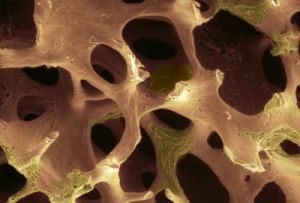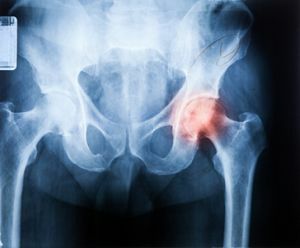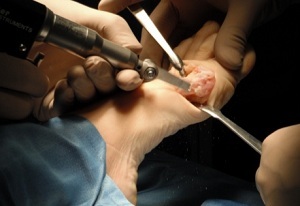Every woman is advised to undergo regular checkups at a gynecologist every six months, since, despite her excellent state of health, she may have developed a cyst with a number of complications and serious consequences. To avoid future problems with planning pregnancy and women's health, it is necessary to have an idea of what a cyst is and for what reasons it develops in women.
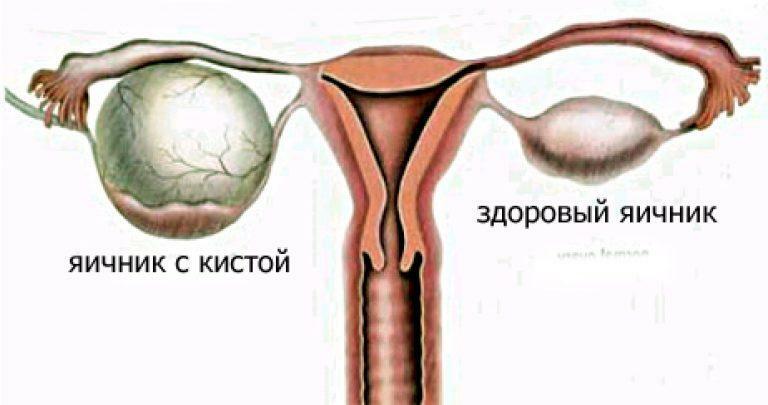
What is dangerous for the ovarian cyst in women
Content of the material
- 1 Pathogenesis of the disease
- 1.1 Video - What is the ovarian cyst? Do I need to delete it?
- 2 The main symptomatology of
- 3 If the ovary functions perfectly, does it carry the danger of a cyst?
- 4 What are the types of cysts and what is their danger?
- 4.1 Cyst species
- 4.2 Video - Ovarian cyst
- 5 What are the complications of cyst formation and how dangerous is it?
- 6 Preventative measures
Pathogenesis of the disease
Many women are diagnosed with a functional cyst, which is benign in nature and does not pose a threat to women's health. If we consider the emergence of this education on the other hand, the emergence of a cyst could be a consequence of any serious ailment requiring urgent therapy.
There is another type of neoplasm - the follicular cyst, which is a fluid bubble that appears on the ovary. In this case, the follicular cyst develops not only inside the ovary, but also on its surface, and reaches a size of several centimeters.
About what the ovarian cyst is told by a specialist in the video.
Video - What is an ovarian cyst? Do I need to delete it?
The main symptomatology of
When forming cysts, determine both secondary and primary symptoms. The first stage proceeds in a latent form, so during this period there are no complaints. Basically, the neoplasm is revealed by routine examination with a doctor. Thus, a small formation with a liquid filling is detected. The only worrying symptom may be a feeling of pain on the day of ovulation and during menstruation. If the cyst does not resolve before the next monthly period, then a special hormone therapy is prescribed by the gynecologist.
This is important! Once a cyst is diagnosed, a woman is strictly forbidden to self-medicate and apply traditional medicine, in order to avoid degeneration into malignant education.
Secondary symptoms are manifested by pain in the lower abdomen. They arise because of the twisting of the cyst leg. If the doctor confirms the torsion, the patient is referred for urgent surgical intervention to prevent the rupture of education.
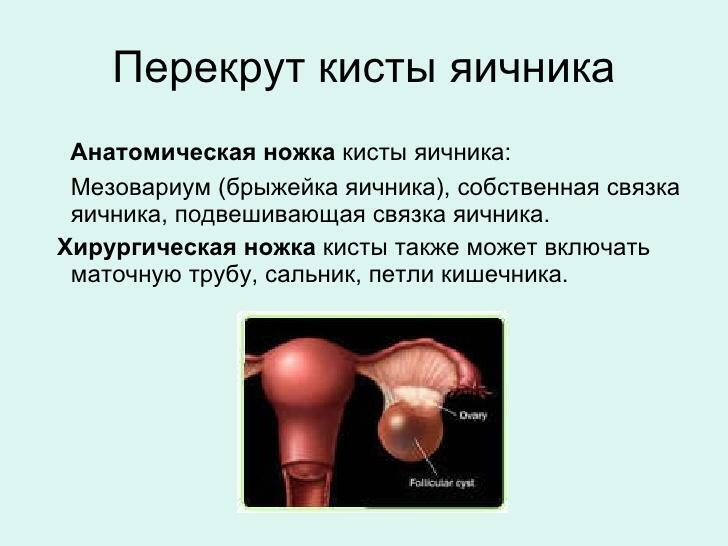
Torsion of ovarian cyst
Independently one needs to pay attention to such signs:
- menstruation is irregular;
- a woman notices the discharge of brown;
- feeling of heaviness in the pelvic region;
- acute pains affecting the lower abdomen;
- during menstruation, there are abundant hemorrhages, which are accompanied by severe soreness;
- , after having sex or intense sports training, there is a feeling of nausea.
The above symptoms can be complicated:
- by high temperature( more than 38 degrees);
- dizziness;
- increase in the size of the clitoris;
- strong sense of thirst;
- frequent urination;
- malaise.

Ovarian cyst
Attention! The appearance of a coarsened voice and increased density of hair on the body is not excluded.
If the ovary functions well, does it carry the danger of a cyst?
Every month, even a healthy woman, a minimal cyst is formed, defined as the Earl's follicle. It's a vial that is filled with fluid and has an egg inside that ripens. A week after the month has ended, this follicle bursts, and the released egg is sent to the fallopian tube for possible fertilization.
In place of the liquid follicle( in which the egg is ripe), a yellow body is formed, it is compacted and has inside vesicles. The main function of the yellow body is to produce hormones in the case of fetal production.
When there is a rupture of the Earl's follicle, but it continues to grow because of the accumulated fluid, this provokes the appearance of a retention cyst.
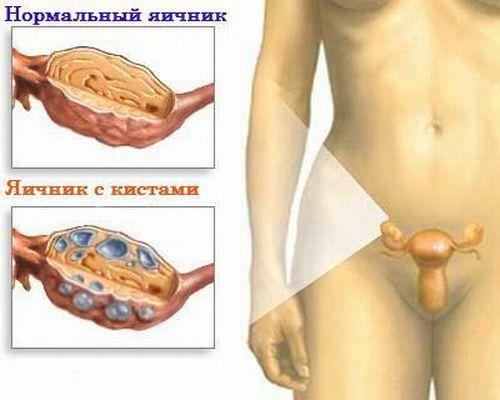
Difference of normal ovary from ovary with cysts
Attention! Statistics show that most young girls are diagnosed with a retention cyst. Such formations are located on one of the ovaries, within two months reach a size of several centimeters, and then independently disappear by resorption.
What are the types of cysts and what is their danger?
It is possible to say for sure that a cyst is a benign formation, but possibly dangerous for women's health, because it can be a sign of a serious illness or be its cause. Therefore, when diagnosing cysts, professional treatment is mandatory.
Cysts
| Type of neoplasm | Image | Short description |
|---|---|---|
| Dermoid | 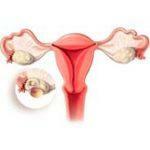 | Neoplasm is benign and localized on the ovaries. Has a strange composition - cartilaginous tissue, hair. Rapidly increases to large sizes, therefore urgent urgent treatment is needed |
| Kistadenoma | 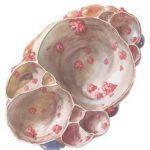 | Education occurs on the ovary and develops asymptomatically, therefore it can be detected only on the examination. Complicated by the rapid achievement of very large sizes( up to 30 centimeters) |
| Endometrioid | 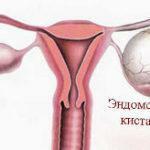 | Endometriosis causes blood to enter the ovaries, which will subsequently fill the cystic formation. To diagnose an endometriosis cyst it is possible independently, as there is a pain pulling character in the bottom of a stomach. In addition, every menses will also be painful. The most important thing in the formation of cysts is the difficulty of becoming pregnant |
| Hemorrhagic | 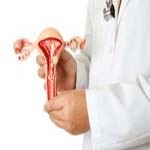 | It is possible that a hemorrhage may occur in the follicular cyst. It will lead to the transformation of the cyst into a hemorrhagic one. There is unpleasant symptomatology in the form of pain, aching in the abdomen( below) |
| Cancer |  | Unfortunately, oncological disease of the ovaries is extremely difficult to diagnose, because the only symptom is a slow-growing cystic formation. Additional symptoms of cancer occur only if the process of metastasis has started in other organs. |
| Polycystic ovary syndrome | 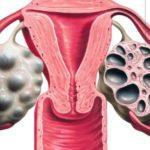 | This pathology involves the formation of several small cysts at once. Later, there may be increased production of male hormones, and as a result - infertility |
Caution! Most often, the formation of cysts in women over 40 years of age, warns of a high risk of oncology. But, in medical practice there were cases when the cancer of the ovaries was confirmed in very young girls.
Only in a small number of girls is diagnosed a functional cyst of large sizes. But, in this case, the emerging symptomatology may have common symptoms with other serious diseases.
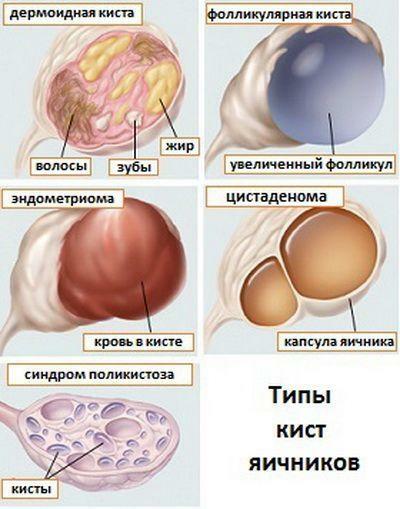
Types of ovarian cysts
Cysts can occur due to the following reasons:
- abortions;
- hormonal disorder;
- menstruation, which started too early;
- problems with the endocrine system;
- STD and other genital infections.
Therefore, in case of the following symptoms, it is necessary to immediately go to see a doctor-gynecologist:
- Repeated loss of consciousness.
- Persistent dizziness.
- Pain, sharp in the lower abdomen.
- A sudden increase in temperature.
- Monthly that pass painfully and irregularly.
- Emetic conditions, nausea.
- Increased level of hair on the body.
- Frequent constipation.
Video - Ovarian cyst
What are the complications of cyst formation and how dangerous is it?
Most diagnosed cysts do not pose a threat to women's health and may disappear on their own. But, there are cases when the formation of large sizes is twisted and becomes and leads to bleeding.
Warning! In the case of severe dizziness with the appearance of bleeding, it is urgent to call an ambulance.
Torsion of the leg of the ovarian cyst
If the whole body is not twisted, but only the cyst leg, then severe pain occurs, and as a result, peritonitis occurs. The result of such pathology is disappointing - infertility.
| Consequences of | Short description |
|---|---|
| Inflammation of | Often inflammation occurs in the cavity of the neoplasm. A ruptured cyst causes peritonitis, because the infection penetrates the abdominal cavity. Inflammatory process also makes it difficult for the egg to pass, therefore the likelihood of an ectopic pregnancy is high. |
| Torsion of the | cyst. As mentioned, one of the consequences may be a torsion of the cyst that leads to a necrotic process. To define this pathology is not difficult, because the symptomatology is similar to the one that occurs when a cyst is broken. However, the course of the pathology is not so complicated, since there is no loss of blood. The first thing a woman feels is pain, a spasmodic nature that does not stop. In this case, surgical removal of the problem is necessary in order to avoid peritonitis. |
| Malignancy of | One of the most dangerous consequences. By their nature cysts are benign neoplasms, but it is possible that after 40 years a woman may have a cyst degeneration into a malignant formation. This is due to the long existence of the cyst, or if there are residuals after removal. Therefore, every time a woman develops a tumor, she is sent for analysis, which detects oncology processes. |
| . | rupture. If the girl suddenly has a fever, dizziness has begun, and in the lower abdomen there is severe pain, then the cyst can be ruptured. After the primary symptoms, discharge from the vagina( a little bloody with an admixture of mucus), and after some time, obvious bleeding begins. Then there is severe nausea followed by vomiting. You can tell from the pale skin that there is a shock. Also, his symptoms include loss of consciousness |
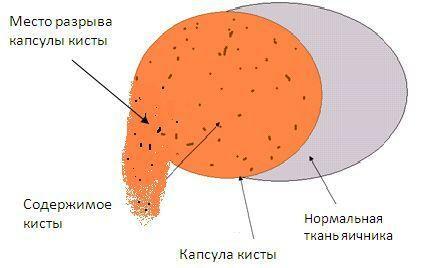
Ovarian cyst rupture
Caution! Cyst ruptures may occur with sepsis and peritonitis. Therefore, to avoid rupture of the neoplasm and prevent the removal of the ovary, you must regularly visit a gynecologist. Otherwise, after surgical intervention, adhesions may develop, there may be problems with defecation and urination.
Preventive measures
To prevent the formation of cysts on the ovaries, it is necessary to carry out preventive measures, as well as observe certain health rules.
- Overeating is contraindicated for a woman.
- Timely measures for obesity.
- In time to begin treatment in the case of inflammatory processes of the reproductive system.
- Observe the stability of the hormonal background and avoid imbalance.
- Abandon accidental unprotected sex.
- Regular visits to a gynecologist.
It should be noted that many women with timely detection of tumors and the use of proper therapy were able to conceive and tolerate a healthy baby. Therefore, one should not neglect routine examinations with a gynecologist, and, when diagnosing a cyst, do not allow it to rupture.

